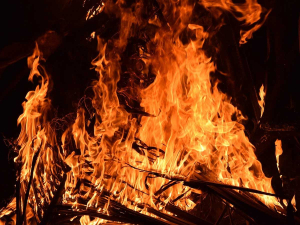Research burns aim to improve wildfire readiness, response
Scion is running experimental research burns near Christchurch from March 3-14, to test new theories on how wildfires spread under various conditions.
 Canterbury has a significant number of hedgerows and shelterbelts near rural infrastructure but, despite this, there is limited research on their role in fire risk.
Canterbury has a significant number of hedgerows and shelterbelts near rural infrastructure but, despite this, there is limited research on their role in fire risk.
New student research from the University of Canterbury in partnership with Fire and Emergency New Zealand (FENZ) could improve knowledge surrounding the risk of wildfire.
University of Canterbury (UC) students George Hamilton and Renee Martin were part of a team that examined the effects of factors such as fuel load, vegetation type, and proximity, on fire risk.
The research focused on identifying and mapping hedgerows and shelterbelts in rural Canterbury, analysing their characteristics, and understanding how these features influence fire behaviour.
Hamilton says the research is personal to him.
“My childhood neighbour’s house burnt down due to a hedgerow fire that spread for two kilometres,” he says. “That experience stayed with me and motivated my interest in this topic.”
Supervised by Associate Professor Marwan Katurji from UC’s School of Earth and Environment, the students began by mapping West Melton hedgerows and shelterbelts to understand their geospatial relationship with infrastructure.
Katurji says the project is contributing to understanding of the risk of wildfire in household environments, using fuel distribution and potential fire behaviour to inform safe living.
“The pilot research aligns well with Fire and Emergency's ongoing national wildfire threat analysis programme. Identifying new fuel types in our rural-urban landscape will help in fire behaviour prediction and firefighting resource allocation.”
Meanwhile, Hamilton says Canterbury has a significant number of hedgerows and shelterbelts near rural infrastructure but, despite this, there is limited research on their role in fire risk.
Part of the research project was to create mitigation strategies based on their findings, Martin explains.
“We discovered that native plantings, creating breaks in shelterbelts and planting hedgerows and shelterbelts further from buildings are key to reducing fire risk,” she says.
In addition to this the team created a risk index to help identify high-risk areas.
“By understanding the patterns and characteristics of hedgerows, communities can reduce fire impact before it starts and respond quicker when fires start,” Hamilton concludes.
Bradley Wadsworth lives on the family farm – Omega Station – in the Wairarapa about 30 minutes’ drive east from Masterton.
With global milk prices falling, the question is when will key exporting countries reach a tipping point where production starts to dip.
Rural contractors want the Government to include a national standard for air plans as part of its Resource Management Act reforms.
The biggest reform of local government in more than 35 years is underway.
An industry-wide project led by Ministry for Primary Industries (MPI) is underway to deal with the rising number of feral pests, in particular, browsing pests such as deer and pigs.
Three New Zealand agritech companies are set to join forces to help unlock the full potential of technology.

OPINION: Winston Peters has described the decision to sell its brand to Lactalis and disperse the profit to its farmer…
OPINION: The Hound reckons a big problem with focusing too much on the wrong goal - reducing livestock emissions at…